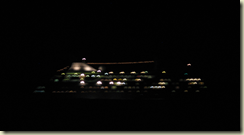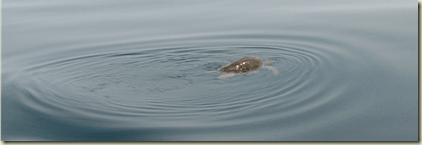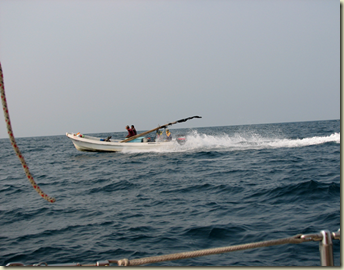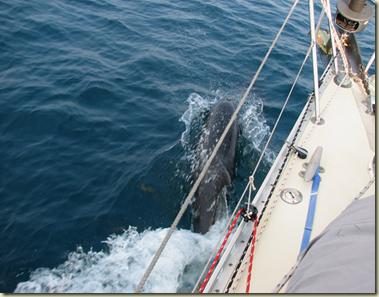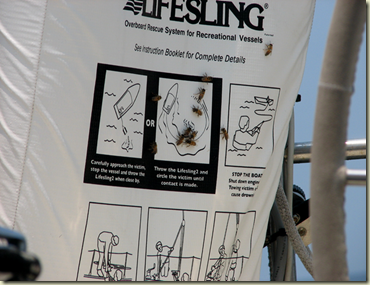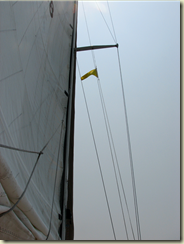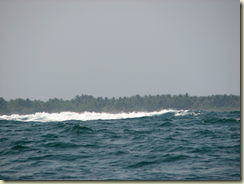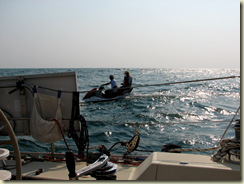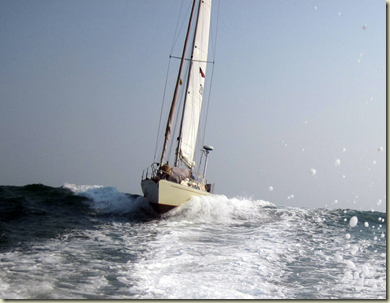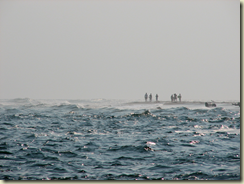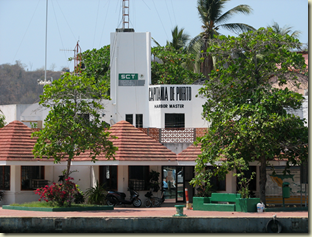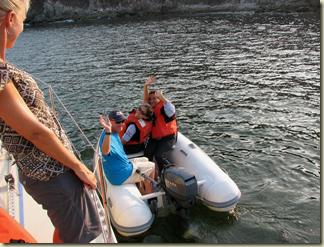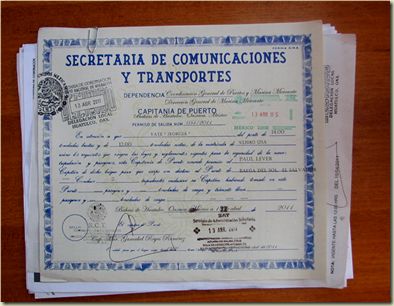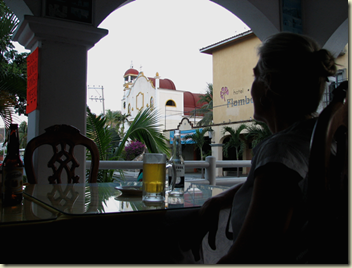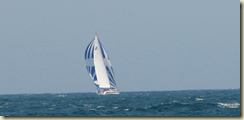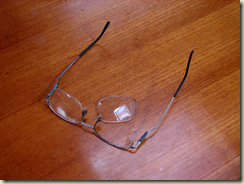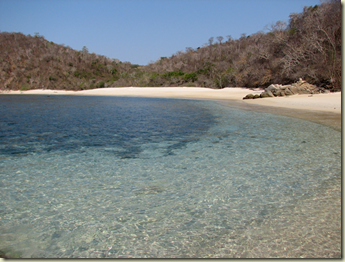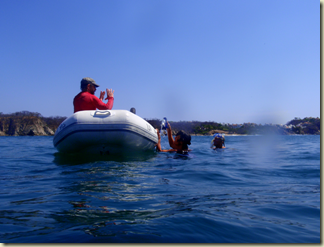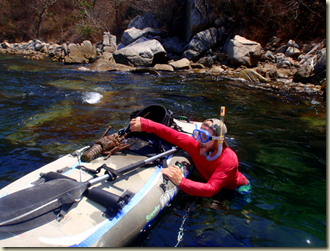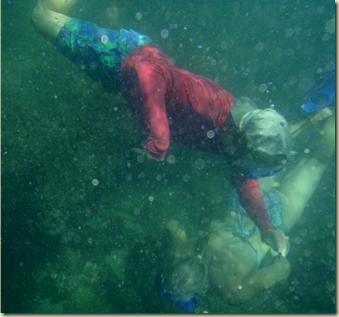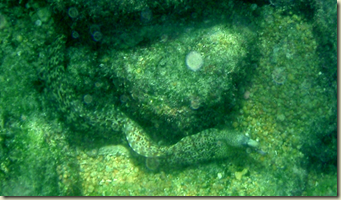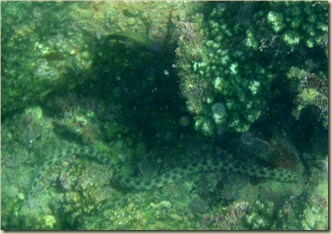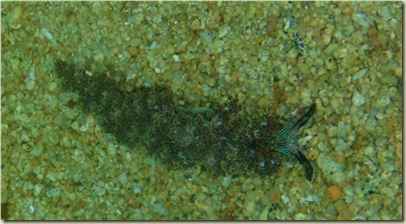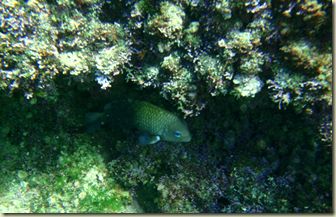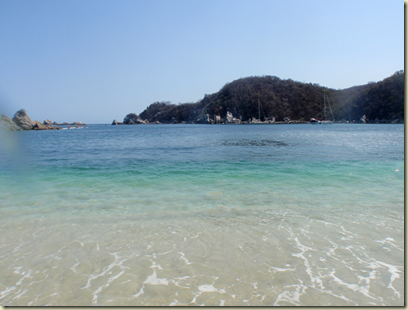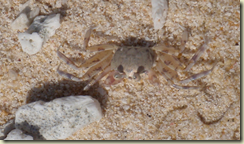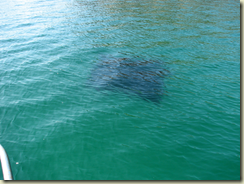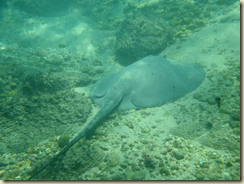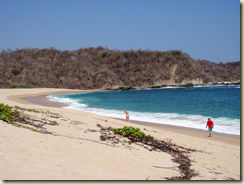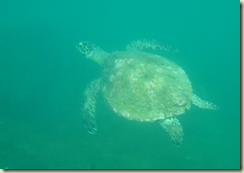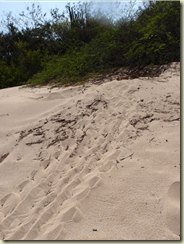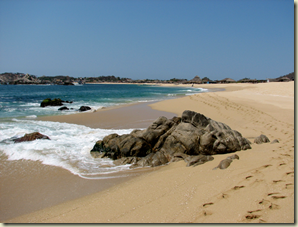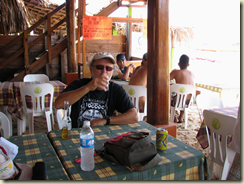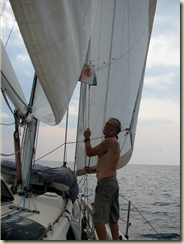
Dropping the Mexican courtesy flag after clearing out of Mexico.
Crossing the gulf was really empty of any shipping. We didn’t see any pangas or ships until the second evening.
I looked on the chart plotter and saw a big AIS target heading our way. It was pointed to go right up our ass at 14kts. We watched it for awhile and it kept on the same course. The AIS has its CPA(closest point of approach) as 10 yards. Way, way too close for a 350 foot ship to come. When they were 5 miles behind us,I called the the cruise ship Silver Cloud on the VHF radio to make sure they knew we were taking up a speck of the ocean in front of them. The watch officer said that they saw us on their radar and would be changing course in 20 minutes. The pic above is them passing out port side. After 2 days we were off of the Guatemalan coast early in the morning. The seas were oily glass smooth and the haze was too much to see the coast. There were so many sea turtles floating around it looked like you could use them as stepping stones to walk to the beach.
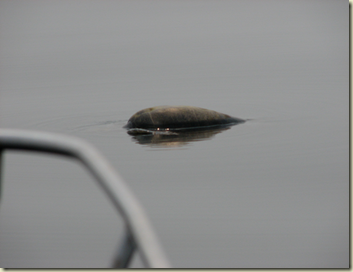
A big guy waiting to be woken up by Jeorgia.
Full panic scramble to get away.
Latter that morning one of the boats that was transiting the gulf, Sound Effect, had engine problems. We tried to help them troubleshoot the fuel issues over the SSB radio. They had been traveling from Tacoma with friends on the sailboat Kokomo. Kokomo volunteered to turn around and motor back 25 miles to pick them up and tow them for the next 125 miles to the entrance of Bahia del Sol, El Salvador. Apparently Denny on Kokomo had a lot of kharmic energy to make up after a career in insurance – this tow was beyond the call of duty.
Kokomo turning back north to pickup Sound Effect.
They ended up towing them all the way to Bahia where Robin, a Canadian diesel mechanic and fellow yatista, got a ride out on one of the jet skis to meet them offshore of the breakers in front of the bar entrance. He got the end going with some bailing wire and they made it in safely.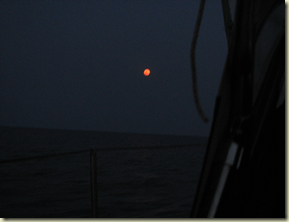
Moon rise over Central America
The next adventure along the coast was the continuous runs with the drift lines. These are floating lines around 100 yards long. At one end they have a small black flag. Then they might have 2 or 3 small white milk bottles along the line to help it float. Every 10 feet or so there is a mono-filament line attached that has a big baited fish hook. The local panga fisherman just leave these to float miles offshore. They come back in a day or so and hunt them down and pull in the harvest. We ended up getting really good at cutting these things free from our keel. In the end we picked up 5 drift lines. Most of these were around 14 miles offshore.
Letting a drift line go after we cut the two parts that were around the keel and tied them back together. You can see one of the milk bottle floats.
Pangeros leaving after directing us around yet another barely marked drift line.
A spotted dolphin greeter. The Central American porpoise speak Spanish with an interesting accent that is slower and easier to understand than the Mexican ones.
The last 12 hours of the 4 day trip we slowed the boat way down to time our arrival at Bahia del Sol. This is an estuary entrance with a shallow bar just offshore and ripping tidal currents. The last 4 hours or so we ended up sailing with a reefed main up just to kill time, waiting on the high tide when it’s safest to cross the bar.
While still 3 miles offshore we got invaded by bees. Here’s group learning how to work the man-overboard lifesling.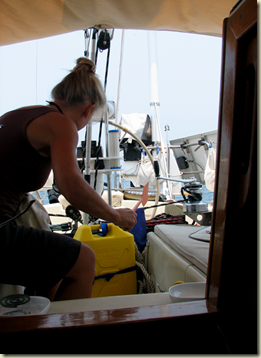
The ships resident naturalist and beekeeper doing battle with the invading foreign bees.
Raising the yellow quarantine flag before entering the El Salvador. This indicates to the officials that you need to check in to the country.High tide was getting close and it was near our time to cross the bar into the estuary. We were the only boat crossing today. Sitting offshore all you can see breaking waves and white water. It is a little intimidating.
At the appointed time Rojelio, the bar pilot, and Bill the rally organizer, met us. Rojelio carefully watch the sets. He got us lined up to go in, but instead of calling for us to go in and called for us to quickly backup, as an unexpected big set showed up. Eventually we changed our entry position slightly, lined Jeorgia up for the start and he called for us to as fast as we could motor and hold it straight.
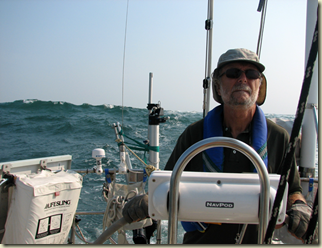 Serious concentration by the esteemed skipper with a big wave building behind us, getting ready for a ‘push’.
Serious concentration by the esteemed skipper with a big wave building behind us, getting ready for a ‘push’.
Jeorgia making an 11 knot run across the bar.
The beach crowd watching Jeorgia go over the bar. I think this is a little like watching a NASCAR race and anticipating the wrecks.
We were met at the dock by the Bahia del Sol dock crew and the port officials. Really friendly and efficient check in. $30 for 30 days in the country plus $10 a person for visas. Fast and easy.
Paul
